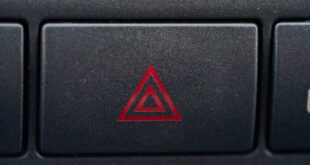The new “black radars” are catching more than speeders on Spanish roads. These high-tech camera systems use artificial intelligence in order to detect lane and occupant violations.
Credit : X – Anonymous Citoyen
@AnonymeCitoyen
Spanish roads are going to become a lot more intelligent. It’s no longer just about your speed.
Remember when you used to flash your rearview mirror if you were going a bit too fast by a speed trap? Settle in. In 2025, it’s not just your right foot the traffic police are interested in – it’s who’s sitting next to you.
Black radars are more than speed traps
So, what are these so-called ‘black radars’ (radares negros) everyone’s suddenly whispering about? In short: the latest tool in Spain’s ever-growing arsenal to keep its roads in check—and drivers on their toes. Contrary to the yellow boxes, which are easy to spot at a distance of a mile, these radars in black are just as subtle. There’s no bright paint or warning signs, nothing to alert you.
They’re not there to catch you if you go 10 over the limit. They are watching inside your car. What’s their specialty? What is their speciality?
What are they? Can you fool them?
Spoiler alert! Not a chance. Armed with thermal sensors, infrared cameras, and some of the smartest AI software this side of Silicon Valley, the black radars can spot whether there’s a real human riding shotgun—or just a wig on a broomstick. It’s a simple idea: shared lanes should be reserved for vehicles that carry two or more passengers, public transportation, or emergency personnel. But some drivers, always the gamblers, tried to game this system using mannequins and elaborate dummies.
The days of the old radars are over. The manufacturers claim that these new radars have an error rate under 1%. The radars work in rain, shine or even when your windows are tinted.
Cameras and fines are both real.
Right now, you’ll spot the first wave of black radars on the bus-VAO lanes heading into Madrid—where, yes, more than a few drivers have tried their luck. Get caught cheating and you’re looking at a €200 fine. It’s not a point, but it can be a real sting in the wallet. France has been using them for some time (just ask the drivers of Paris or Lyon), but Spanish traffic officials are not wasting any time in implementing them here.
If you think you can spot them, good luck—they’re intentionally discreet. Stop accelerating after you slow down to look at a yellow sign.
Black radars: What they are and why they’re in Spain.
Not all of it is about catching the cheeky. It’s more important to encourage people to share cars, use public transport and clear up the morning traffic jams. This is a small, but effective step in cities eager to cut emissions and traffic.
What’s next? Do not be surprised if technology gets smarter. Some people believe that these cameras can detect drivers who are drowsy, or those who use their mobile phones while driving. If you’re not a fan of Big Brother, this might sound grim—but most road users are quietly glad to see fewer rule-breakers getting away with it.
What drivers need to know about Spain’s black radars
If you’re a rule-follower, carry on as you were – you’ll barely notice. You may want to reconsider your driving style if you are the type who takes mannequins for rides. Black radars will change the way people drive in Spain. Do not say that you were not warned.
 Costa News Spain Breaking News | English News in Spain.
Costa News Spain Breaking News | English News in Spain.



